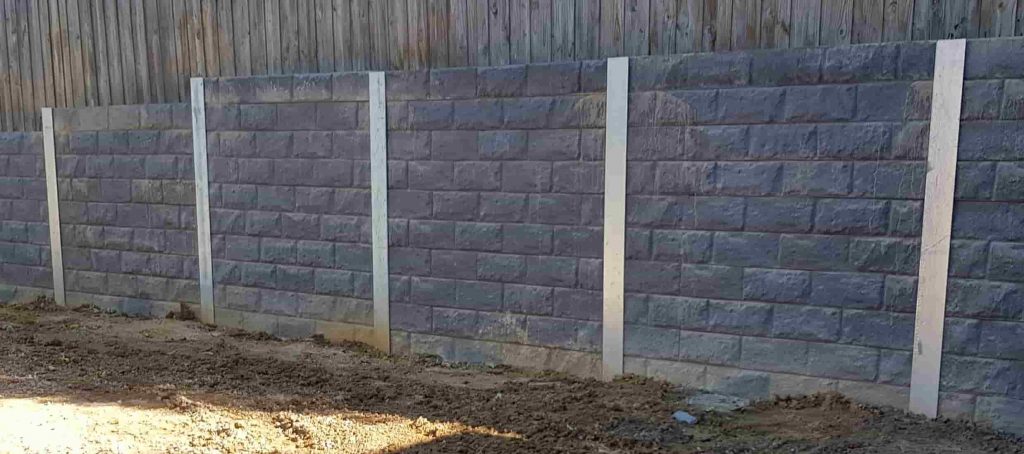Introduction
In today's fast-paced building and construction environment, retaining wall contractors are constantly evolving to satisfy the needs of modern architecture and landscaping. The tools and technologies that these professionals use have gone through substantial developments, allowing for higher effectiveness, resilience, and visual appeal. Whether you're a homeowner aiming to install a maintaining wall or a professional seeking to boost your skills, understanding these innovative services is vital. In this short article, we will look into the latest tools and technologies used by contemporary keeping wall builders.
What is a Keeping Wall?
Understanding the Concept
A maintaining wall is a structure created to hold back soil or rock from a structure, structure, or area. These walls prevent erosion and create level areas on sloped terrains. They can be found in numerous products such as concrete sleeper, wood sleeper, timber sleeper, and even stone.
Importance of Keeping Walls
Retaining walls play a vital function in landscape management. They not only supply structural assistance however also enhance the aesthetic worth of outdoor areas. House owners frequently seek professional services from retaining wall contractors to ensure that their installations are safe and visually appealing.
Exploring the Latest Tools and Technologies Utilized by Modern Retaining Wall Builders
The Evolution of Retaining Wall Construction
Over the years, traditional approaches of building keeping walls have progressed substantially due to technological developments. Builders now use numerous modern-day tools that enhance precision and effectiveness in their work.
Advanced Surveying Equipment
One key advancement remains in surveying equipment. With tools like laser levels and overall stations, retaining wall installers can achieve exact measurements, which is vital for making sure that walls are level and stable.
Benefits of Laser Levels
- Accuracy: Offers extremely accurate leveling. Speed: Minimizes time invested in manual measurements. Ease of Usage: Simple setup allows for quick adjustments.
Innovative Material Dealing with Technologies
The handling of heavy materials like concrete sleepers or stone has actually enhanced dramatically with new machinery such as forklifts and telehandlers. These devices decrease labor costs while enhancing safety on-site.
Advantages of Utilizing Telehandlers
- Versatility: Can be utilized for several tasks beyond product handling. Reach: Capable of lifting materials to greater elevations without extra scaffolding.
Key Products Utilized in Keeping Walls
Concrete Sleepers: Sturdiness Satisfies Aesthetics
Concrete sleepers have actually turned into one of the most popular options amongst contemporary home builders due to their strength and longevity. They provide both practical advantages in addition to visual appeal.
Why Choose Concrete Sleepers?
- They resist weathering better than wood or timber options. Available in various designs to match different architectural styles.
Wood vs Lumber Sleepers: Making the Right Choice
While wood sleepers are often favored for their natural appearance, they can deteriorate gradually due to wetness. Lumber sleepers use increased toughness however at a greater cost.
Pros & & Cons Table:
|Material|Pros|Cons|| ------------------|-------------------------------------|------------------------------------|| Wood Sleeper|Natural appearance|Prone to rot|| Timber Sleeper|Long-lasting|Expensive|
Modern Style Strategies in Retaining Wall Construction
Utilizing 3D Modeling Software
Today's keeping wall contractors frequently utilize sophisticated 3D modeling software for design functions. This technology allows them to envision how different materials will look together before actual building and construction begins.
Features of 3D Modeling Software
- Real-time adjustments. Enhanced partnership in between clients and builders.
Green Building Practices
Sustainable practices are ending up being significantly crucial in building and construction. Modern maintaining wall contractors often integrate eco-friendly products such as recycled concrete or sustainably sourced lumber into their projects.
Construction Tools That Make A Difference
Heavy Equipment: Excavators & & Backhoes
Heavy equipment plays an integral function in preparing websites for retaining wall setup. Excavators and backhoes are important for digging trenches where walls will be placed.
Benefits of Utilizing Heavy Machinery
- Reduces manual work requirements. Speeds up job timelines significantly.
Hand Tools: Never Underestimate Their Value
Despite advances in technology, hand tools remain important for fine-tuning installations. Tools like shovels, trowels, and mallets make sure accuracy during the lasts of construction.
Safety Protocols in Retaining Wall Construction
Ensuring Worker Security with Modern Gear
Safety equipment has actually likewise evolved with innovation; modern-day helmets equipped with communication devices enable workers to stay linked on-site while keeping security protocols.


Key Safety Equipment
- Hard hats with interaction systems. High presence vests that improve employee exposure on-site.
Risk Management Strategies
Identifying possible risks early can save money and time down the line. Many professionals implement comprehensive training programs focusing on danger assessment strategies customized particularly for maintaining wall projects.
Case Research studies: Successful Maintaining Wall Projects
Residential Project: A Backyard Transformation
A current domestic project involved transforming a sloped backyard using concrete sleepers designed through 3D modeling software application. The outcome was spectacular-- a visually attractive yet functional area that met all client expectations!
Project Highlights
- Use of advanced equipment decreased labor costs by 30%. Implementation of sustainable practices resulted in minimal environmental impact.
FAQs About Retaining Walls
What types of materials can be used for retaining walls?- Common materials include concrete sleepers, wood sleepers, timber sleepers, and stone.
- Look for experience, positive evaluations, correct licensing, and insurance protection when picking a contractor.
- Yes! Regional building codes may determine height limitations or product constraints for retaining walls; constantly consult local authorities before beginning construction.
- While do it yourself is possible for those with experience, it's a good idea to speak with professionals if you're unsure about any aspect of the project.
- Installation timelines differ based upon size however usually range from one week to numerous weeks depending upon complexity.
- Regular inspections are vital; check for cracks or indications of movement periodically.
Conclusion
In summary, exploring the current tools and technologies utilized by modern maintaining wall home Tuff Stuff Retaining Walls builders exposes a market devoted to development while focusing on safety, efficiency, and sustainability. From sophisticated surveying instruments like laser levels to environmentally friendly structure practices including sustainable materials like wood sleepers or recycled concrete-- each advancement serves not simply functionality but likewise aesthetics most importantly crucial in today's architectural landscape. As property owners become more aware of these advancements, collaborating with skilled specialists becomes vital-- guaranteeing that every job meets high requirements while sticking securely within budget plan constraints without compromising quality!
Whether you're looking for help from an experienced retaining wall installer or preparing your next home improvement project yourself-- remaining notified about these developments will empower you every action along your journey!